Non Woven Landscaping Fabric

Table of Contents
Non-Woven Landscaping Fabric: Your Guide to Weed Control and Soil Health
Choosing the right landscaping fabric can significantly impact the success of your gardening projects. This comprehensive guide delves into the world of non-woven landscaping fabric, exploring its benefits, drawbacks, and how to choose the best option for your needs. We'll cover everything from understanding its properties to installation tips and addressing common misconceptions.
What is Non-Woven Landscaping Fabric?
Unlike woven fabrics, which are created by interlacing threads, non-woven landscaping fabric is made from fibers bonded together through mechanical, chemical, or thermal processes. This creates a permeable material that allows water and air to pass through while preventing weed growth. It's a popular choice for gardeners and landscapers alike due to its versatility and effectiveness. Key features include:
- Permeability: Allows water and air to reach plant roots, promoting healthy growth.
- Weed Barrier: Prevents weeds from sprouting and competing with desired plants.
- Durability: Offers long-lasting weed control, often lasting several years.
- Lightweight: Easy to handle and install, even for large areas.
Benefits of Using Non-Woven Landscaping Fabric
The advantages of using non-woven landscaping fabric extend beyond simple weed control. Here's a breakdown of its key benefits:
- Reduced Weed Growth: This is the primary advantage. By blocking sunlight, the fabric inhibits weed seed germination and growth, saving you time and effort on weeding.
- Improved Soil Moisture Retention: The fabric helps retain moisture in the soil, reducing the frequency of watering, particularly beneficial in dry climates.
- Soil Temperature Regulation: It can help moderate soil temperature, protecting plant roots from extreme heat or cold.
- Erosion Control: On slopes or in areas prone to erosion, the fabric can help stabilize the soil and prevent washout.
- Clean Weed Removal: Makes weed removal much easier if any do manage to penetrate the fabric.
Choosing the Right Weight and Material
The weight of the fabric, usually measured in ounces per square yard (oz/sq yd), is a crucial factor. Heavier fabrics (e.g., 4-6 oz/sq yd) offer more durability and better weed suppression, but can be more expensive and harder to install. Lighter fabrics (e.g., 1-2 oz/sq yd) are easier to work with but might not provide the same level of weed control.
The material is also important. Most non-woven fabrics are made from polypropylene, a durable and UV-resistant synthetic material. Look for fabrics that are specifically designed for landscaping use.
Installation Tips for Non-Woven Landscaping Fabric
Proper installation is key to maximizing the effectiveness of your landscaping fabric. Follow these steps for best results:
- Prepare the Area: Clear the area of existing weeds, rocks, and debris. Till the soil to a depth of several inches.
- Cut and Lay the Fabric: Cut the fabric to the desired size, overlapping edges by at least 6 inches to prevent weed growth.
- Secure the Edges: Use landscape pins or staples to secure the fabric to the ground, especially around the edges.
- Cut Holes for Plants: Cut precise holes for planting, ensuring the fabric doesn’t interfere with root growth.
- Add Mulch (Optional): Applying a layer of mulch on top of the fabric provides additional weed suppression, improves soil aesthetics, and helps retain moisture.
Common Misconceptions about Non-Woven Landscaping Fabric
- It completely eliminates weeds: While highly effective, some persistent weeds might still find their way through.
- It's harmful to the environment: Most non-woven fabrics are made from recyclable polypropylene. Opt for biodegradable options if environmental sustainability is a priority.
- It’s a permanent solution: While durable, it might eventually degrade over time, requiring replacement.
Non-Woven Landscaping Fabric vs. Other Weed Control Methods
Compared to other methods like chemical herbicides or manual weeding, non-woven landscaping fabric provides a more sustainable and environmentally friendly approach to weed control. It's more labor-intensive initially but offers long-term benefits.
Conclusion: Making the Right Choice for Your Landscape
Non-woven landscaping fabric is a valuable tool for gardeners and landscapers seeking effective and long-lasting weed control. By understanding its properties, choosing the right weight and material, and following proper installation techniques, you can significantly improve the health and appearance of your landscape. Remember to weigh the pros and cons against your specific needs and budget to make an informed decision. Happy gardening!
Keywords: non-woven landscaping fabric, weed control, landscaping fabric, weed barrier, permeable fabric, polypropylene fabric, gardening tips, soil moisture retention, erosion control, landscaping materials, weed suppression, landscape fabric installation.

Thank you for visiting our website wich cover about Non Woven Landscaping Fabric. We hope the information provided has been useful to you. Feel free to contact us if you have any questions or need further assistance. See you next time and dont miss to bookmark.
Featured Posts
-
Sliding Patio Door Smart Lock
Dec 01, 2024
-
Fall Color Bathroom Ideas
Dec 01, 2024
-
Double Sink Bathroom Vanity Top
Dec 01, 2024
-
Barca Loses To Las Palmas 1 2 Defeat
Dec 01, 2024
-
Damp Rated Lights For Bathroom
Dec 01, 2024